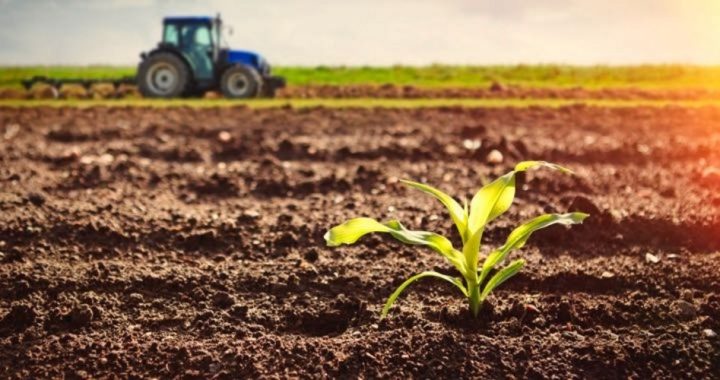
Podcast: Play in new window | Download ()
Subscribe: Android | RSS | More
It turns out that President Donald Trump’s multi-billion dollar bailout of America’s struggling farmers is in reality just another inexcusable example of crony capitalism.
When he announced his agricultural assistance package — officially called the Market Facilitation Program (MFP) — President Trump promised that the $16 billion would be used to blunt the blow the country’s farmers would suffer as a result of the president’s trade war with China, principally the tariffs imposed on Chinese-made goods imported into the United States.
It seems small farmers, those least likely able to survive a protection war with China or any other country, haven’t seen any improvement in their precarious economic positon. The same cannot be said, however, of mega-farms owned by billionaires. Those companies are seeing subsidies in the billions coming in from D.C.
In a report published on July 30 by the Environmental Working Group (EWG), data obtained frrom the U.S. Department of Agriculture (USDA) through the Freedom of Information Act (FOIA) petition revealed the identities being enriched by President Trump’s farm subsidy program.
Of the $8.4 billion in MFP funds dispersed from 2018 through April 2019, the following facts were found in the documents obtained from the USDA:
• The top one-tenth of recipients received 54 percent of all MFP payments.
• Eighty-two farmers have so far received more than $500,000 in MDP payments.
• One farm, DeLine Farm Partnership of Charleston, Mo., has so far received $2.8 million in MFP payments.
• The top 1 percent of MFP recipients received, on average, $183,33l. The bottom 80 percent received less than $5,000.
• Thousands of residents of the nation’s largest cities received MFP payments.
Did you catch that? The top one percent of those receiving farm bailout money collected on average about $183,331 each in subsidies, while the bottom 80 percent — the family farmers — were paid less than $5,000 from the $8.4 billion fund.
Here’s EWG’s summary of how billions of taxpayerfunded farm subsidies found their way into the accounts of agri-business rather than family farms:
Until now, MFP payments have been linked to crop production, favoring the large producers of certain crops. Although USDA initially said it would place a $125,000 cap on MFP payment, the department chose to apply rules that allow relatives who do not contribute meaningful work on the farm to receive farm payments, allowing many farm businesses to evade the cap.
Changes to the second round of MFP payments, announced last week by Agriculture Secretary Sonny Purdue, will further favor the largest farmers by linking payments to the number of acres, not the number of bushels or bales produced. The bigger the farm, the bigger the government check.
Such surreptitious subsidy schemes are nothing new, of course. The federal government has fixed the game for decades, siphoning billions of dollars out of the wallets of taxpayers and into the accounts of multi-million acre mega farms. This con is carried on by one administration after the other, without regard to party affiliation.
In terms of economic impact, President Trump’s tariffs and the farm bailout created to offset them will do generational damage to the small- to medium-sized American farmers by producing an increase in the cost of available farmland, making millions of acres of arable land beyond the buying power of all but the wealthiest agricultural conglomerates.
Make no mistake: The corporate agri-businesses enriched by these latest federal farm bailouts are nothing more or less than welfare recipients. Fortunately for the CEOs and other executives of these massive farms, the American public pictures ghettos and projects when they think of where welfare money goes.
When it comes to welfare, the cash doesn’t just get deposited into the accounts of American agri-businesses.
As reported in May, a $62 million MFP payment — you know, the money to ease the suffering of American farmers — was paid by the U.S. government to a subsidiary of a Brazilian meatpacking company currently being investigated by the Department of Justice for “potential violations of the Foreign Corrupt Practices Act.”
Here’s the rest of the story as reported by Huffington Post:
The U.S. Department of Agriculture is paying a total of $62.4 million to buy pork from JBS USA — whose parent company is Brazil-based JBS S.A. — using taxpayer funds intended to help U.S. farmers weather Trump’s trade war. JBS S.A. is the largest meatpacking company in the world.
The company’s owners, brothers Joesley and Wesley Batista, served prison time in Brazil after admitting to bribing top Brazilian officials in a massive corruption scandal. Both the U.S. Justice Department and Security and Exchange Commission are investigating JBS for “potential violations of the Foreign Corrupt Practices Act,” which outlaws bribery, among other offenses. Justice Department investigators interviewed the Batista brothers in Brazil late last year.
Senator Tammy Baldwin (D-Wis.) fired off a letter to President Trump insisting he explain how taxpayer money meant to rescue American farmers was ending up enriching Brazilian billionaires. “Allowing taxpayer funds to support foreign agricultural companies, particularly corrupt foreign companies, at a time when farmers in Wisconsin and across the country are suffering from pain caused by your trade wars is outrageous and I’m calling on you to explain how you allowed this to happen,” Baldwin wrote.
According to data included by Baldwin in her letter, as quoted by Huffington Post, the president’s trade war with China has caused “1,500 bankruptcies in Wisconsin dairy operations since Trump took office. In April alone, the state lost 90 dairy farms to bankruptcies.”
President Trump tells a different story, however. He insists that the tariffs he imposed on Beijing will be paid for by the Chinese. “Just so you understand,” Trump said, “These tariffs are paid for largely by China. A lot of people like to say by ‘us,’” he added during his announcement of the farm subsidy scheme.
The plain and undeniable fact of the matter is that the money to fund the farm subsidies is transferred from the American taxpayer to someone — regardless of whether it be a billion-dollar farm owned by a multinational corporation or a 100-acre farm owned by an American family — who did not earn that money. This scheme, then, does what all federal welfare schemes were designed to do: convert the federal government into the distributor of wealth.
Again, it’s no surprise to most readers that a federal subsidy scheme is being manipulated so as to divert taxpayer wealth into the coffers of corporations. That’s the way welfare works.
What might come as a surprise, however, is how this transfer of wealth and consolidation of farming and manufacturing is one of the 10 points in Karl Marx’s Communist Manifesto.
The ninth point in that plan calls for the “combination of agriculture with manufacturing industries.”
According to an article published in the Wall Street Journal in 2017, four percent of the farms in the United States “produce two-thirds of the country’s agricultural output.”
In May 2019 an NPR report revealed that American farmland isn’t even owned by Americans any more. “Today nearly 30 million acres of U.S. farmland are held by foreign investors. That number has doubled in the past two decades, which is raising alarm bells in farming communities.”
Taxpayers burdened by personal debt, liable for the national debt, are now suffering the effects of federal farm subsidies being funneled to foreign multinational corporations and to giant agri-business, all the while being told their hard-earned money is being used to save the small American family farms.
Photo: narvikk / E+ / Getty Images Plus



